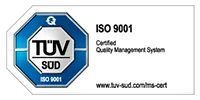Startups: What Tech Stack Should You Choose for your Project?
- Blog Startups: What Tech Stack Should You Choose for your Project?




Startups: What Tech Stack Should You Choose for your Project?
Startups: What Tech Stack Should You Choose for your Project?
Selecting the right tech stack is the important first step of starting any technology project. Choosing the wrong technology stack can lead to poor execution of an otherwise great idea. With the increase in choice, it can be difficult to decide what solution will be best suited to your project requirements. It might be tempting to decide on a set of solutions that are trending or new but unestablished technologies can come with uncertainties. Ensure you deeply understand your choice to avoid critical mistakes.
To help founders make an informed decision, this article will be delving into what makes a good tech stack, including what has been used in some of the most successful technology projects.
What is a tech stack?
A tech stack is the collection of technologies a company uses to build an app or run a software project. This can also be referred to as a solutions stack and it typically includes a variety of functions. The functions of a tech stack can range from the framework developers use to the applications connected through APIs.
What is included in the tech stack can change and grow over time through the evolution of your software project. The following is a short list of some of the software subsystems and components that make a tech stack.
- Operating systems
- Programming languages
- Servers and cloud computing platforms
This combination of solutions is referred to as a stack because the whole tech ecosystem of projects has a layered structure. The layers require building upon one another, creating strong internal dependencies between the different tools used. This sense of dependencies can often make it difficult to drop or change components at a later stage in the development process.
Reasons why you need to choose the right tech stack
Technology stacks are fluid and often change however, your initial decisions influence important parts of a technology project such as budget, timeframe and members of your project team.
Budget and Project Costs
The first area to address may be the licensing fees paid to any licensed technology on your stack and ongoing payments for the software infrastructure used.
Secondly, software maintenance expenditures affect the final project cost. Some technologies cost more to update, scale and modify. Programming languages and frameworks impact your software architecture, codebase size, and also ease of maintenance.
Lastly, technology partners expenses. Mature and popular technology stacks have a wider talent base, thus a reduction in costs.
It is important to select something right the first time due to the fact that major changes can bring unplanned expenses. If you decide to rewrite code in another language or change hosting providers it can increase your budget, since it requires time and money.
You may also have to decide between a fast development cycle or good performance on a large scale. The best way to decide between the two is to make sure you always keep your go-to-market strategy in mind. If you expect your product to quickly gain attention from customers it is best to start with powerfully built technology to avoid your software crashing after launching. On the other hand, if you are going for a soft launch, a rapid prototype is fine to build up the momentum until you’ve proven your idea works well and have a better understanding of what features are in demand.
How can you choose the right tech stack?
You can build most projects with various blends of tech but which blend is most suited to your needs? Here are some tips to help you start putting together your tech stack, whether it’s for web development or app development.
Align your priorities to your business goals
Your software will belong to a particular category (IoT app, real-time app) or industry. The category your software belongs to will define the challenges you’ll need to solve and the areas you can’t compromise on, such as security.
The first and best place to start would be to decide on a programming language. There are recommendations for programming languages aligning to your businesses needs:
- Python: great for computation and statistics
- Java: financial software and enterprise apps
- Fullstack Javascript: I/O intensive single-page real-time apps
- .Net Core : Commercial web and app backend
- C++ and C#: game development
Once you’ve decided on a programming language the next steps become easier, as they are based on the ecosystem of the language chosen.
Whilst projects can differ, the types of tech stacks used can remain the same as they provide sufficient capabilities for particular kinds of projects.
For example: LAMP or LLMP – for simple web apps and dynamic websites, is an acronym for:
- Linux operating system
- Apache webserver or Lighttpd
- MySQL database management system
- Perl, PHP or Python programming language
This stack is best suited for Linux distributions and is also commonly competing for the attention of tech startups. These frameworks allow developers to be prepared for the development journey process. There is also a difference between web app and mobile tech stacks. The way a mobile app is composed differs from a web app. All these things should be taken into consideration when choosing your tech stack.
Tech Stacks shared by unicorns
Companies share their technology choices on blogs like StackShare. If you wanted to develop something similar, we’ve shared some popular tech stacks below so that you can learn from their choices.
Monzo:
- Programming language: Python, Java
- Libraries: React
- Servers & cloud computing services: Amazon EC2
- Databases: Cassandra
Canva:
- Programming language: Javascript, Java, Typescript
- Libraries: React
- Servers & cloud computing services: Amazon EC2
- Content delivery network: Amazon CloudFront
Uber:
- Programming language: Python, Java
- Libraries: Backbone.js
- Servers & cloud computing services: Amazon EC2, NGINX
- Databases: Cassandra, MySQL
It is a great idea to see what technology stacks worked for successful technology projects. These solutions should not be the only thing you consider as they may be outdated and a choice selected when no other options were available.
Incepteo
At Incepteo we partner with you to help you decide what tech stack is best suited to your technology project in our detailed discovery workshops. We understand that it can be a difficult and uncertain process but we ensure the right decisions are made for the longevity of your business. Contact us for help with making this decision.
Share this:
Recent Posts
- Strategic Engagement Models with Technology Service Companies: The Incepteo Approach
- The CTO Advisory: Why Your Startup Needs Expert Technology Guidance
- AI Development Predictions 2024: Anticipating the Next Phase of Innovation
- Revolutionizing Mobile App Development 9 Innovative Technologies Leading the Change
- Ensuring Mobile App Security: 7 Vital Measures Every Developer Should Implement
By Sector

How Can Incepteo Help You?


Quick Links
AI SERVICES
2024 © All rights reserved by Incepteo

